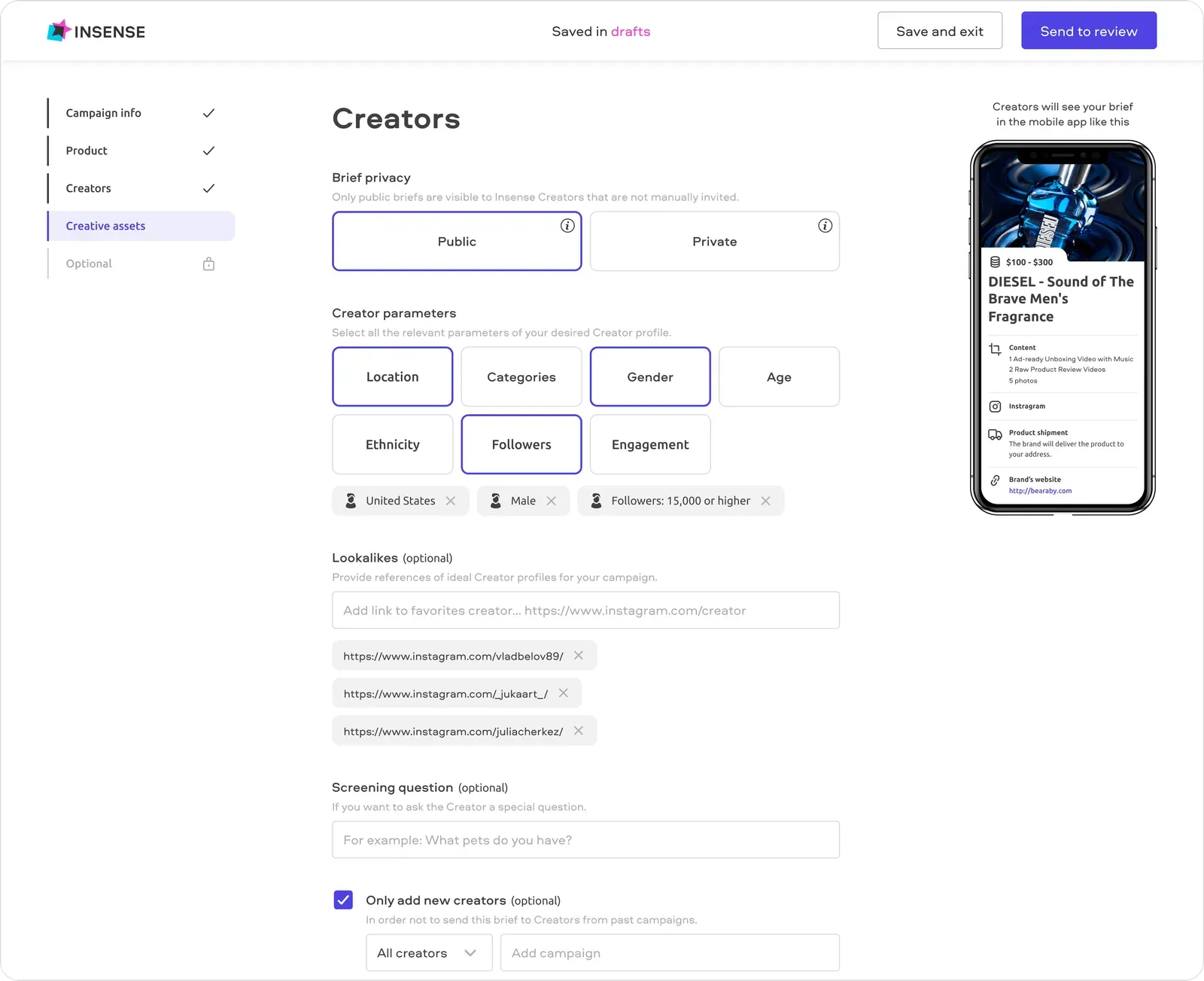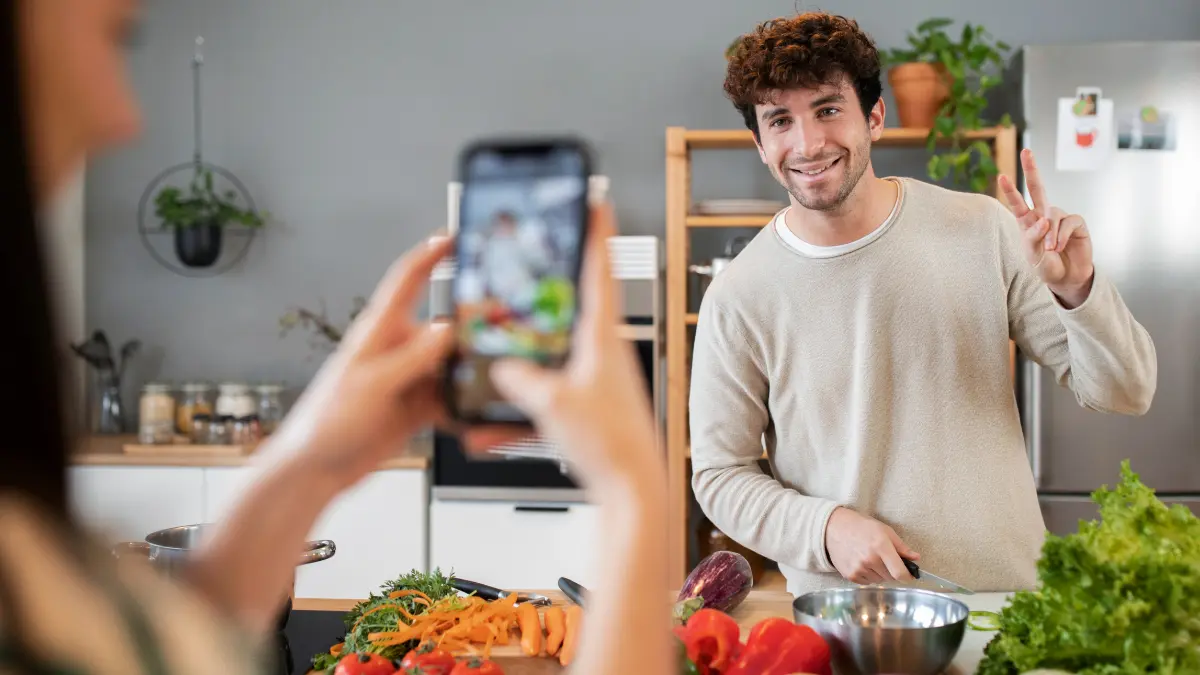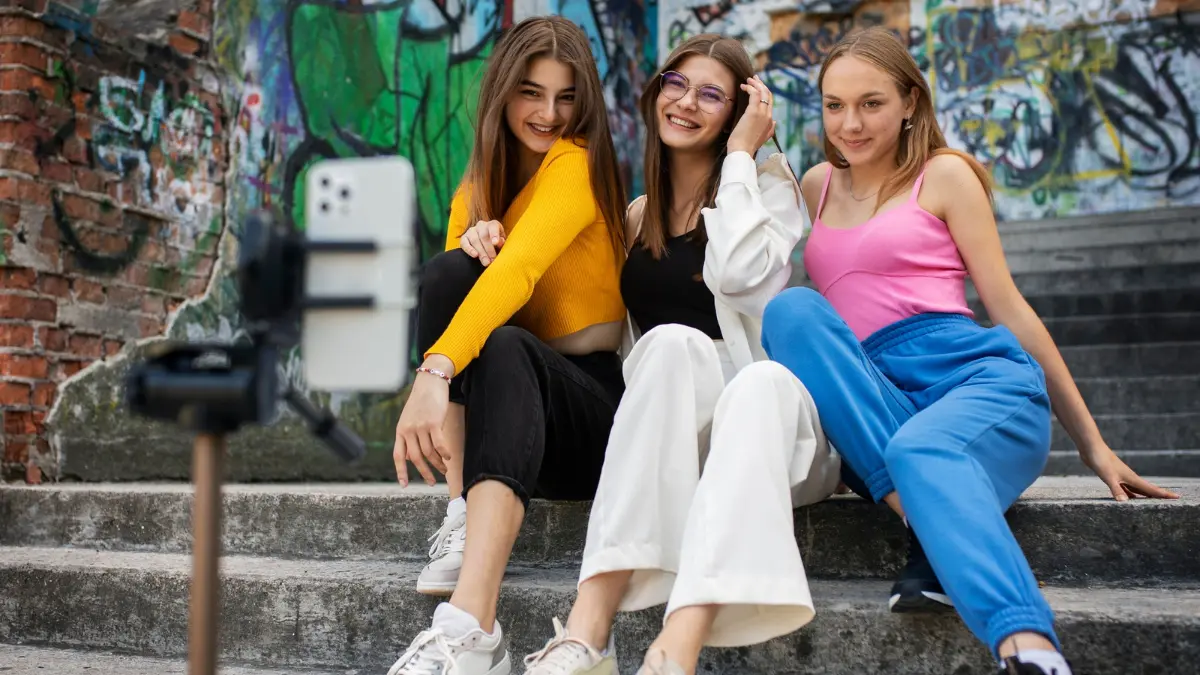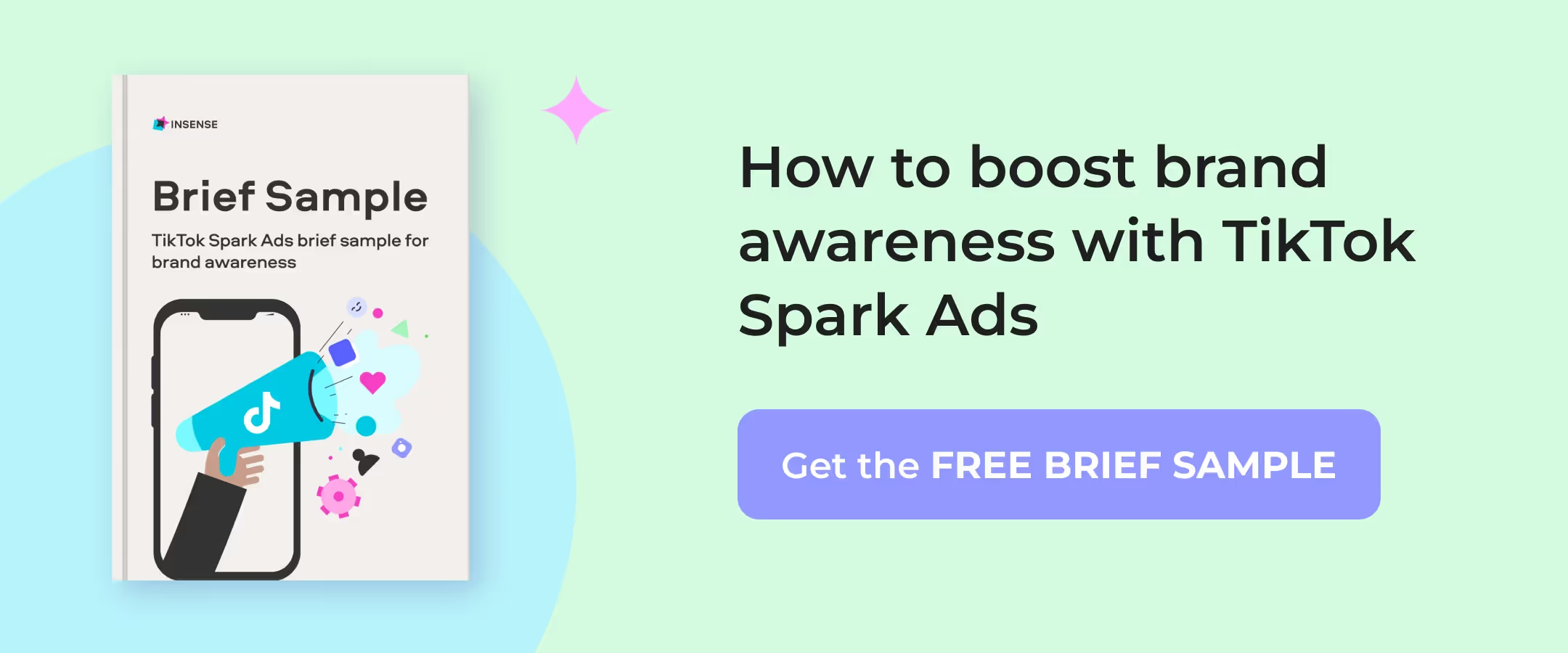Food used to be something we experienced around a table.
Now, we experience it through our screens, scrolling past sizzling noodles, perfectly gooey cookies, and 15-second cinematic tutorials that show us how to prep a salad.
In 2025, the most influential people in the food world aren’t Michelin-starred chefs or TV hosts, they’re the ones filming recipe videos from their kitchen counters, reviewing snacks from the front seat of their car, or sharing what they made for lunch with a ring light and a tripod.
These are the tastemakers shaping how we eat, what we buy, and even how we define “good food.”
But with thousands of creators out there, how do you know who’s actually worth collaborating with?
That’s where this list comes in.
We’ve pulled together a selection of the top food influencers based on follower count, content quality, niche expertise, and brand collaboration potential.
So, whether you’re a food brand looking for your next influencer partner or just someone curious about the people shaping what we eat online, this list is for you.
Bon appetit—let’s tuck in.
What are food influencers?
Food influencers are content creators who specialize in sharing culinary content, like recipe videos, cooking tips, product reviews, and taste tests.
They often post across platforms like TikTok, Instagram, and YouTube, and they cater to specific niches: vegan meals, indulgent desserts, quick family dinners, global cuisine, fitness-friendly snacks… you name it.
Whether they’re plating up Michelin-level dishes or just showing how to make a 3-ingredient protein smoothie, food influencers know how to spark cravings and conversations.
Why are food influencers in demand
Food is personal. It taps into emotion, memory, culture, and lifestyle. And in a world of endless choices, consumers want to see real people using products in real ways.
Imagine a DTC brand has just launched a line of gluten-free pancake mixes. A traditional ad might show a perfect stack of pancakes and a catchy slogan. But a food influencer will go one step further and show you how they made Sunday brunch with the mix while their kids helped stir the batter.
They’ll talk about how fluffy it turned out and maybe even post a blooper from the first “oops-too-browned” batch. It’s real, it’s relatable, and it sells, because shoppers can put themselves in the influencer’s shoes.
Here’s why brands are jumping at the chance to work with food influencers:
- They drive purchase decisions, especially for impulse buys like snacks and new grocery items (in fact, 74% of US shoppers have bought a product because an influencer recommended it).
- They produce tons of modular content for creative testing, from unboxings and ASMR cooking clips to full recipe walkthroughs.
- They’re gold for paid ads, especially when paired with Spark Ads or whitelisting strategies.
- They create evergreen content that works across your socials, emails, and product pages.
💡Insense spotlight: Bones Coffee partnered with Insense on a managed campaign that delivered 54 high-quality UGC videos in just three months. Using these creator-made assets, they launched 16 ad campaigns that generated over $25K in revenue in a single month, delivered a 2.16× return on ad spend, and achieved a 21% click-through rate, ranking among the top 23% in their industry
Top 15 food influencers in 2025
Here’s our menu of the best food influencers around at the moment. Each one brings something unique to the table and they’re exactly the kind of creators brands should be watching (and working with).
1. Owen Han
Owen Han is known for crafting some of the most mouthwatering sandwiches on the internet. His videos mix ASMR-style slicing, sizzling sounds, and ultra-crisp editing to make every sandwich feel like an experience.
With over 4 million TikTok followers, his content is both satisfying and high-performing, perfect for food brands looking to turn basic ingredients into scroll-stopping content. His style works especially well for snack, deli, and grocery brands.
2. Abhir El Sagir
Abir is a Lebanese creator who showcases rich, flavorful recipes with a cultural twist. Her videos are beautifully filmed and deeply rooted in heritage, making her stand out from typical food influencers. She has built a massive follower base of 15M+ on Instagram and 29M+ on TikTok by consistently sharing easy-to-follow, feel-good cooking videos that appeal to a wide range of audiences.
3. B. Dylan Hollis
B. Dylan Hollis is the king of retro baking. He recreates vintage recipes from the 1800s to the 1950s with a humorous twist, combining history, nostalgia, and quirky editing. With over 10 million followers and a bestselling cookbook, he’s a great fit for heritage food brands, baking mixes, or any CPG company wanting to blend fun with familiarity.
4. Tineke Younger
Tineke, also known as “Tini,” is a classically trained chef who’s best known for her ultra-cheesy mac and cheese recipes and comfort food creations. Her content is fast-paced, satisfying to watch, and always leaves viewers hungry.
She strikes a great balance between chef-level technique and relatable food that viewers actually want to make. With 11M+ TikTok followers, Tineke is ideal for brands in the dairy, pasta, or frozen foods space looking to reach comfort-food lovers.
5. Eitan Bernath
Eitan creates colorful, approachable, family-friendly recipes that appeal to a wide audience. Beyond social, Eitan is also a published author and television personality, bringing cross-platform reach and mainstream credibility. His content is upbeat and polished, and he regularly works with brands on smart, high-performing collabs.
6. Meredith Hayden
As a private chef in the Hamptons, Meredith shares day-in-the-life vlogs, behind-the-scenes cooking prep, and entertaining tips that feel both aspirational and attainable. Her followers love the balance of high-end lifestyle with genuinely useful cooking ideas.
7. Emily English
Emily is a UK-based nutritionist who’s built a massive following by making healthy food simple and satisfying. Her content focuses on quick, balanced meals (think “what I eat in a day,” gut-friendly breakfasts, and smart snack swaps) all delivered with a warm, no-judgment tone. With 1.8M+ followers and a cookbook launch underway, she’s become a go-to voice for health-conscious millennials.
8. Yumna Jawad
Yumna shares approachable, nourishing recipes inspired by her Lebanese roots and striking the sweet spot between comfort and health, from easy weeknight dinners to beautiful mezze spreads. With nearly 5M followers, she’s trusted by a wide audience and frequently collaborates with food and kitchen brands.
9. Carleigh Bodrug
Carleigh’s plant-based content is both practical and rooted in sustainability. Her signature “scrappy cooking” videos show how to use up kitchen scraps, reduce food waste, and still make delicious meals.
10. Cooking With Lynja
Lynja, a retired engineer turned internet cooking sensation, brings joy and humor to everything she makes. Her quick-cut videos often feature her son and have become well-loved across generations. With over 22M followers, her content is quirky, wholesome, and universally appealing. She’s ideal for family-friendly brands, food and drink products, or anything fun that needs a bit of viral energy and intergenerational charm.
11. Max the Meat Guy
Max specializes in all things meat, from dry-aged steaks to creative BBQ experiments, and his content is pure sensory overload in the best way. He combines technical know-how with viral showmanship, making him a hit with both foodies and everyday grillers. He’s a strong fit for meat, spice rubs, grill tools, or any brand targeting food lovers who enjoy bold, flavorful content.
12. Always Be My Foodie
Recel (a.k.a. Always Be My Foodie) is a food explorer known for showcasing everything from street eats to hidden-gem cafés. Her feed is full of vibrant, close-up food shots paired with short, personal captions that give each post a human, down-to-earth feel.
13. My Culinary Adventures
This Dallas-based creator blends food, culture, and storytelling to showcase everything from African home recipes to global dining adventures. His content feels thoughtful, inviting, and culturally rich, making them a fantastic partner for brands that care about community and authenticity.
14. Nina the Queen Foodie
Nina is a NYC-based creator who shares quick, relatable food content with a global twist (think sushi hauls, street eats, and cozy café finds). Her TikTok is full of playful, high-energy videos that feel genuine and unfiltered, making her content especially appealing to Gen Z and young millennial audiences.
15. Francesca Carmela
Francesca shares delicious, home-cooked meals with a strong Italian-American influence, like Sunday sauces, pasta bakes, and cozy dinner spreads. Her content has a comforting, family-first vibe that resonates with viewers who crave warmth and nostalgia in their feeds. Based in the Bronx, she’s known for mixing old-school flavors with a modern twist, making her a fantastic partner for pantry brands, pasta companies, or kitchenware campaigns looking for that authentic, heartfelt touch.
How to choose the right food influencer
Not every food creator will be just right for your brand, and that’s kind of the point.
Like Goldilocks choosing her porridge, the magic happens when everything fits: the content, the tone, the audience.
Here’s how to find your just right match.
Are they actually engaging their audience?
Audience engagement refers to how much creators’ followers interact with their content. Think likes, comments, shares, saves, link clicks, or even replies to Stories and DMs. In short: are people just watching, or are they leaning in?
A creator with 20K followers and 5% engagement will almost always outperform someone with 200K and no interaction.
In the food space, people rely on the comments to decide if something’s worth trying. An engaged audience means followers are actively considering, questioning, and acting on what the creator shares.
What to look for:
- Regular comments that go beyond “yum!” or emojis
- Followers asking questions, tagging friends, or saving the content
- Two-way interaction, likepolls, replies, comment responses
- Engagement rate that matches or beats industry averages for their follower tier
Is their content the right flavor for your brand?
What kind of food content do they specialize in and how do they bring it to life? Are they focused on plant-based snacks? High-protein meal prep? Street food reviews? And are they posting quick TikToks, voiceover tutorials, or slow-mo plating reels?
Food influencer collaborations feel far more natural when a creator’s content style matches your product category. If you’re a health-focused snack brand, partnering with a creator who posts indulgent cheat meals every day won’t make sense. But someone who shares daily lunchbox ideas or “snack hauls” could be a perfect fit.
What to look for:
- Niche categories that align with your product (e.g. family meals, cultural dishes, performance snacks)
- A consistent format that’s easy to plug your brand into (voiceovers, ASMR, tutorials, reviews)
- A tone that fits your audience (playful, smart, calming, bold)
Do their values vibe with yours?
Brand alignment is about values, voice, and audience match. Does the influencer talk about clean ingredients when that’s your thing? Do they speak to the same demographic you’re targeting? Would your product feel natural in their content?
Even the best food influencer marketing can fall flat if there’s a mismatch between your brand and the influencer’s audience or messaging. But when alignment is strong, the partnership feels authentic, which can improve brand perception and long-term trust.
What to look for:
- Shared values (like transparency, sustainability, inclusivity)
- Visual consistency (do their shots match your aesthetic, or would your product stand out in a bad way?)
- An audience that overlaps with yours by age, lifestyle, values, or location
Are they showing up on the right platforms?
Where does the creator actually show up and where does their content perform best?
Different platforms have different strengths. If you’re running TikTok Spark Ads, you’ll want someone with a TikTok-first approach. If you’re planning a content bank for Meta ads or Instagram Stories, Reels creators may be a better fit. Choosing the right platform match helps you get the most out of your spend, both for organic reach and paid distribution.
What to look for:
- Where the creator gets the most views and engagement
- Format fit (short-form video, long-form storytelling, static imagery)
- Platform features you plan to use (e.g. whitelisting, Spark Ads, Reels Boosting)
Tips and tricks for a successful food influencer campaign
Food influencer campaigns can do a lot: boost discovery, generate creative content that converts, and build trust with an audience that cares about what they put in their cart and in their body. But to get there, you need more than just a good product and a list of creators.
Here’s how to build a campaign that performs across organic, paid, and owned channels:
Be clear on what kind of content you actually need
A common mistake brands make is asking for “a food video” without knowing how or where they’ll use it.
- Do you need modular UGC clips for creative testing? If so, ask for multiple hooks, b-roll, and raw vertical footage.
- Want influencer posts to boost awareness and credibility? If yes, focus on creators with audience trust, not just reach.
- Need high-quality visuals for your product detail pages or Amazon listings? Then brief for lighting, close-ups, and packaging moments.
The format should match the function and your creator brief should reflect that.
Vet influencers like you’d vet a creative partner
Followers count is important, but there are many other factors at play. When choosing the right food influencers, look at:
- Their last 5–10 posts: Are they creating content similar to what you need?
- Their comment sections: Do followers ask questions, save recipes, click links?
- Their tone: Does it match your brand voice? Or would your product feel out of place in their feed?
If you're looking for creators who can drive ad results, ask for previous paid performance data as well as organic metrics.
Build detailed briefs, but don’t box creators in
The best content briefs give clear structure but leave space for the creator’s personality to come through.
Here’s what to include in a strong food influencer brief:
- The product USP in plain language (what makes it stand out?)
- What you’re hoping the audience will feel, do, or learn
- Hard deliverables (length, format, content specs)
- Creative guidelines (your preferred tone, visual themes, editing style)
- Clear “Do Not Include” list (e.g. no claims, no comparisons, no negative phrasing)
Top food influencers have spent a ton of time getting to know their audience and building their platforms. They know who they’re talking to better than anyone, so trust them to make content feel natural and engaging.

Make sampling and shipping easy
If you're doing product seeding, don’t make creators chase tracking numbers or sign for a parcel during work hours. Influencers are often juggling dozens of campaigns.
Here are some ways you can make it as easy as possible:
- Send a product that’s ready to use or cook and avoid extra prep or hard-to-open packaging.
- Include a one-pager with talking points or ingredient info.
- Add your contact info and respond quickly to questions, especially if they're filming on a deadline.
Repurpose your top content
Use a centralized content library (like Insense’s built-in library) to:
- Tag assets by product, creator, format, and performance
- Identify top-performing assets and use them as templates
- Share with your paid media, social, and email teams so nothing gets lost
Then, turn high-performing content into ads, use it on product pages, or weave it into your email marketing efforts.
💡Insense spotlight: To scale their paid performance, kitchenware brand Jean‑Patrique teamed up with over 100 micro and mid-tier creators through Insense. The result was a steady stream of high-performing, whitelisted content that powered 100+ ads, delivered a 2.3× ROAS, and drove 300%+ revenue growth quarter-over-quarter.
Are you ready to find your delicious food influencer?
Choosing the right food creator is an important step in any successful influencer campaign.
Here’s how to make smart, strategic choices:
- Start with your product, then think about how people use it. Are you selling a quick-prep meal? Look for creators sharing weekday dinner hacks. Launching a snack brand? You’ll want someone who does taste tests or lunchbox content. Think about where your product naturally fits and which creators already create that kind of moment.
- Use smart filters to narrow in. With Insense, you can find creators based on niche tags (like vegan, gluten-free, or comfort food), platform performance, Amazon Storefronts, TikTok Shop enrollment, and more.
- Watch their content. Look at camera presence, storytelling style, and how their audience responds. Do they get genuine questions in the comments? Are they comfortable on video? Do they already create the kind of content you need?
- Mix and match creator sizes to match your goals. Micro-influencers are ideal for generating high-trust, repurposable content. Add in a few nano creators for ultra-authentic posts, or go bigger with macro creators if reach is the priority.
Let’s make your next campaign your most delicious one yet.



.avif)




.avif)

